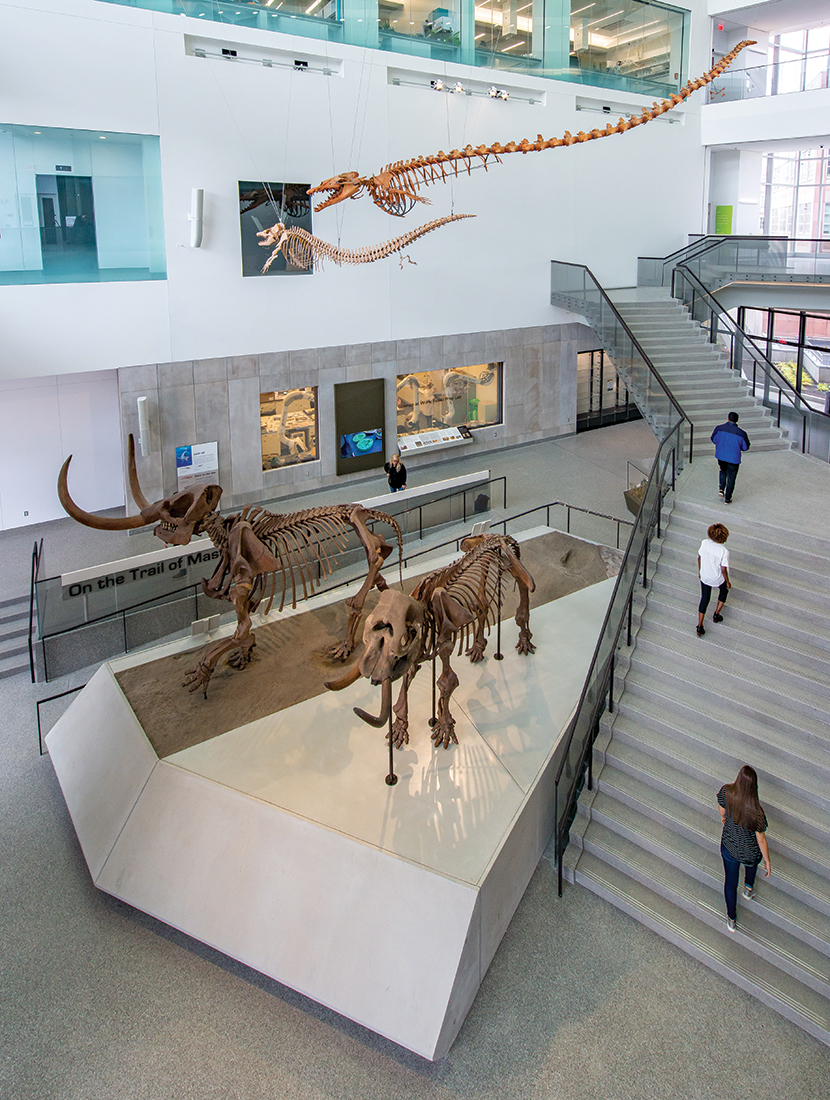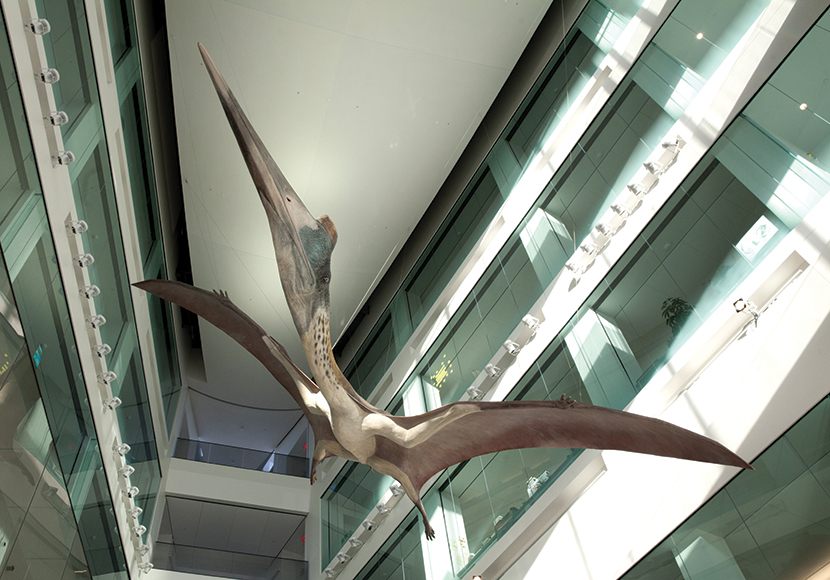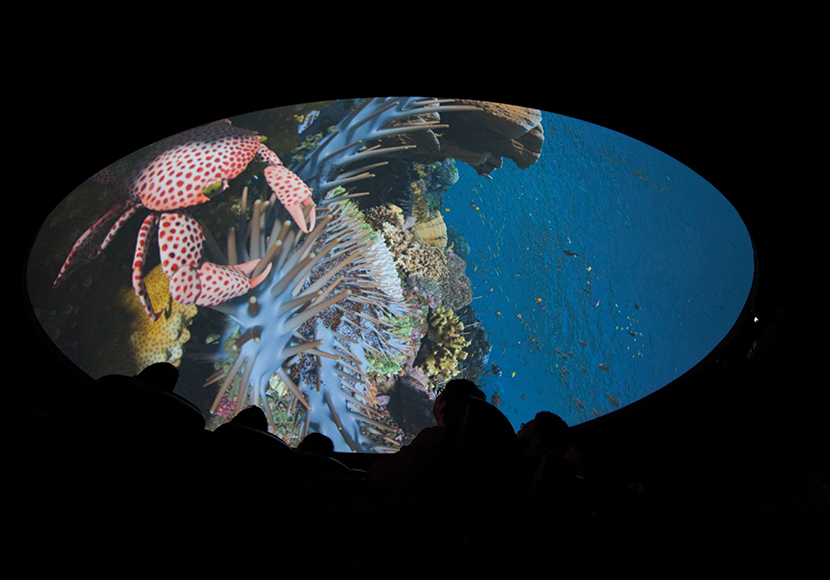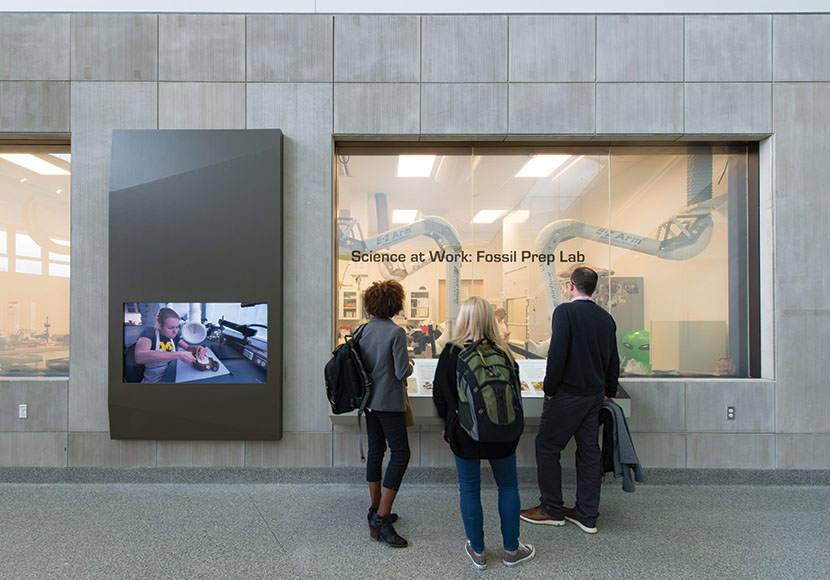Most alumni remember the Ruthven Museums Building as the home of the U-M Museum of Natural History. Since its 1928 opening there, the museum served generations of visitors, whether aspiring paleontologists, couples on their first date, or stressed students looking for an intellectual diversion. Those museum-goers remember the dinosaurs and the dioramas, made more intriguing by Ruthven’s dark rooms and hallways.
But the museum now enters a new phase. On April 14—16 months after its closing—the iconic pumas will greet visitors at a new location in the Biological Sciences Building (BSB), just across the street from the Ruthven building. (Additional exhibits, including one about the natural history of Michigan and another exploring the world of microbiology, will open this November.)
Gone are the dark rooms, replaced by modern, airy spaces that dramatically contrast with the artifacts dating back 4 billion years. Rather than group the exhibits within one space in the building, the museum (part of LSA) winds its way through the BSB.
Until you can visit for yourself, Michigan Alumnus offers this quick tour of just a few museum highlights.
 MASTODONS AND WHALES
MASTODONS AND WHALES
1st Floor, East Atrium
Upon entering the BSB’s east atrium, visitors will see the museum’s mastodon couple, which long pleased museum-goers in the Ruthven building. Hovering above are the skeletons of two prehistoric whales, also known as Dorudon and Basilosaurus.

QUETZALCOATLUS
2nd Floor, West Atrium
A 25-foot Quetzalcoatlus pterosaur flies high in the Biological Sciences Building’s west atrium. The life-size model, a new installation, is one of the largest animals known to have flown.
EVOLUTION: LIFE THROUGH TIME
2nd Floor
What’s old is new in this walk through nearly 4 billion years of life on Earth. Visitors will learn how the earliest organisms affected our planet, how evolution connects all living things, and how mass extinction events are not just ancient history. The exhibit also features touchable Tyrannosaurus rex and Basilosaurus skulls, a life-size (about 45 inches tall) model of the extinct human relative Australopithecus sediba (left), and a Majungasaurus (right)—the museum’s first new dinosaur in more than a decade.

PUMAS
Outside Entrance
For the past 70 years, two pumas—favorites of many students and the public—have stood guard at the entrance to the museum.

PLANETARIUM AND DOME THEATER
1st Floor
From the stars in the sky to the creatures of the sea, the high-tech planetarium offers viewers new perspectives on celestial bodies, geology, weather, and other wonders of the world.

SCIENCE AT WORK: FOSSIL PREP LAB
1st Floor
The new Fossil Prep Lab allows visitors to see how fossils are prepared for study and display. Along with the Biodiversity Lab, it is one of two Science at Work exhibits. Housing the museum in the Biological Sciences Building—with its labs, classrooms, and offices—allows visitors to see cutting-edge research in real time.







